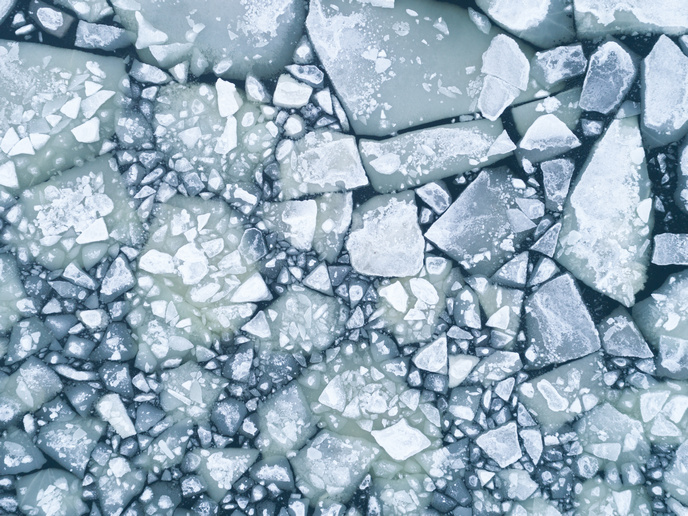Why does ice float?
Here’s the common explanation for why ice floats: as water freezes, its molecules arrange themselves into a crystal structure, leaving extra space between themselves and making ice less dense than liquid water. But this explanation oversimplifies the truth, says physicist Russo, from Sapienza University in Italy. The real reason lies in the unique properties of hydrogen bonds between water molecules. In ice, these bonds form a structured, rigid lattice that holds the molecules in a very specific arrangement. In liquid water, however, the hydrogen bonds can flex and distort without breaking. This flexibility allows water molecules to sit more closely together. “If hydrogen bonds were slightly more rigid, liquid water would lose this packing efficiency and become less dense than ice, a shift that would disrupt ecosystems, reshape climates and render Earth unrecognisable,” explains Russo. To illustrate, imagine squeezing a cylinder filled with both liquid water and ice. According to the Clausius-Clapeyron law, a fundamental thermodynamic principle, applying pressure encourages the contents to shift into the phase that can pack molecules more tightly. For most substances, that phase is solid, which offers a compact, orderly structure with minimal empty space. Like stacking cannonballs or oranges, by arranging them in a regular, compact pattern, they fill the space most efficiently with minimal gaps. This principle usually applies to solids, where fixed, structured arrangements create maximum density. But water behaves differently. “Water isn’t a normal liquid,” says Russo. It belongs to a category called ‘empty liquids’. The hydrogen bond’s flexibility and the empty space in the liquid structure mean that a disordered arrangement allows water molecules to pack more densely than they would in the structured ice lattice. So under pressure, the contents of our slushy would become more liquid. Russo’s work in the SOFTWATER project, which was funded by the European Research Council, unravelled more of the fascinating properties that make water unique. This included developing computational models of water’s flexible hydrogen bonds, allowing Russo and his team to imagine new forms of water. Water is as mysterious as it is essential. Ice’s ability to float on water helps to shape our climate, and allows aquatic life to survive beneath frozen lakes and oceans. Something to think about the next time you stir the cubes floating in your drink. Click here to find out more about John Russo’s research: Unlocking the secretes to what makes water unique
Keywords
SOFTWATER, water, ice, float, density, thermodynamic, structure, mysterious, ocean, climate



